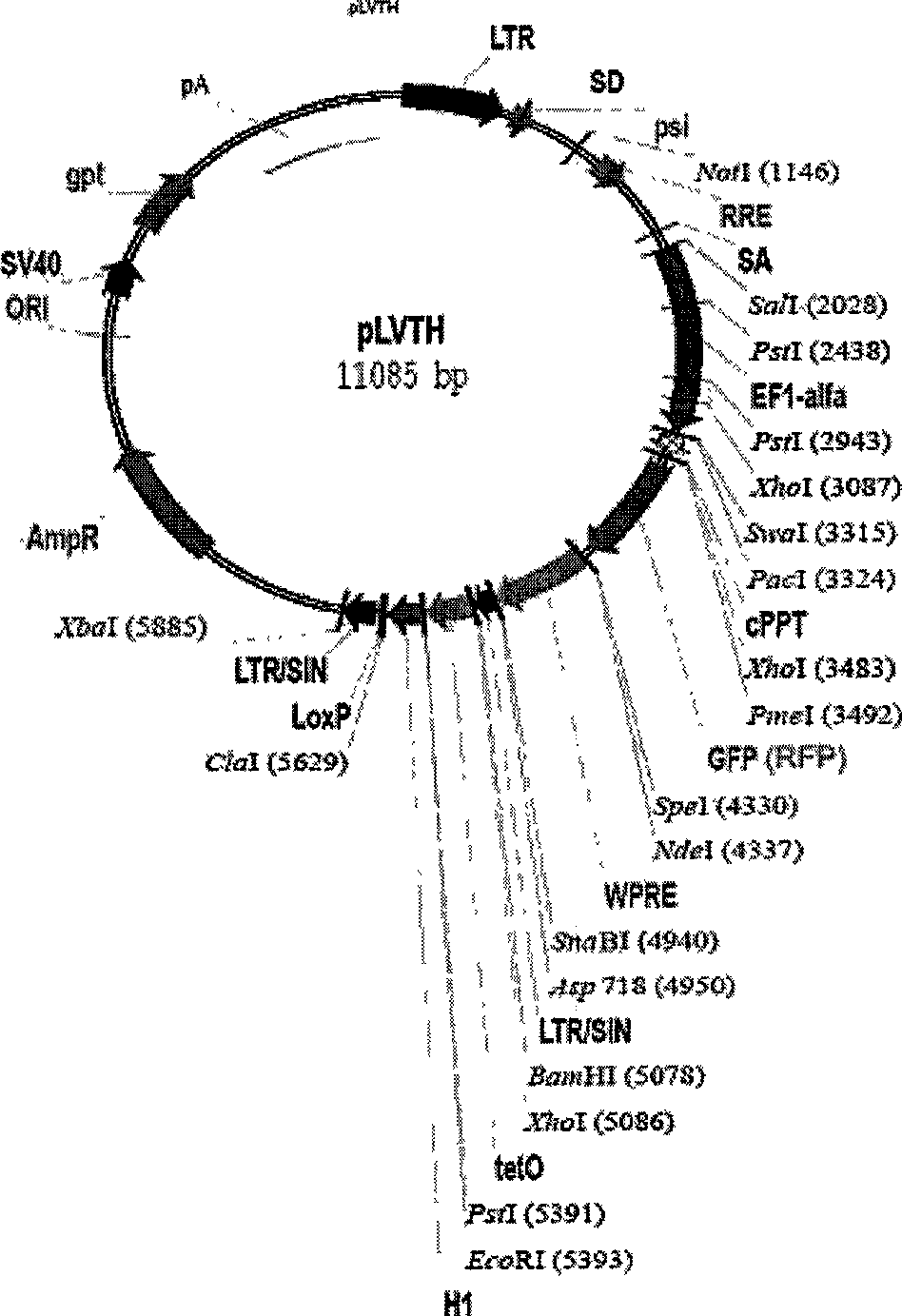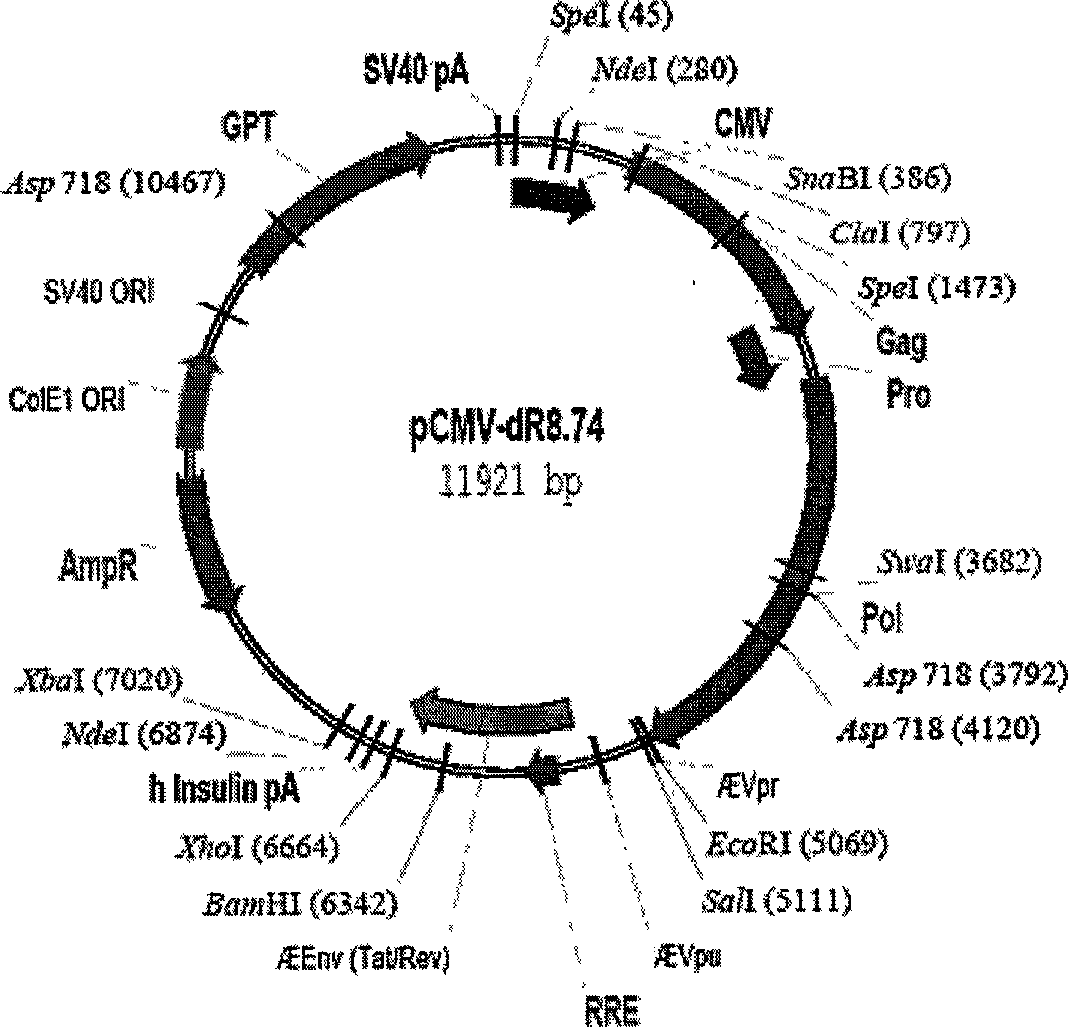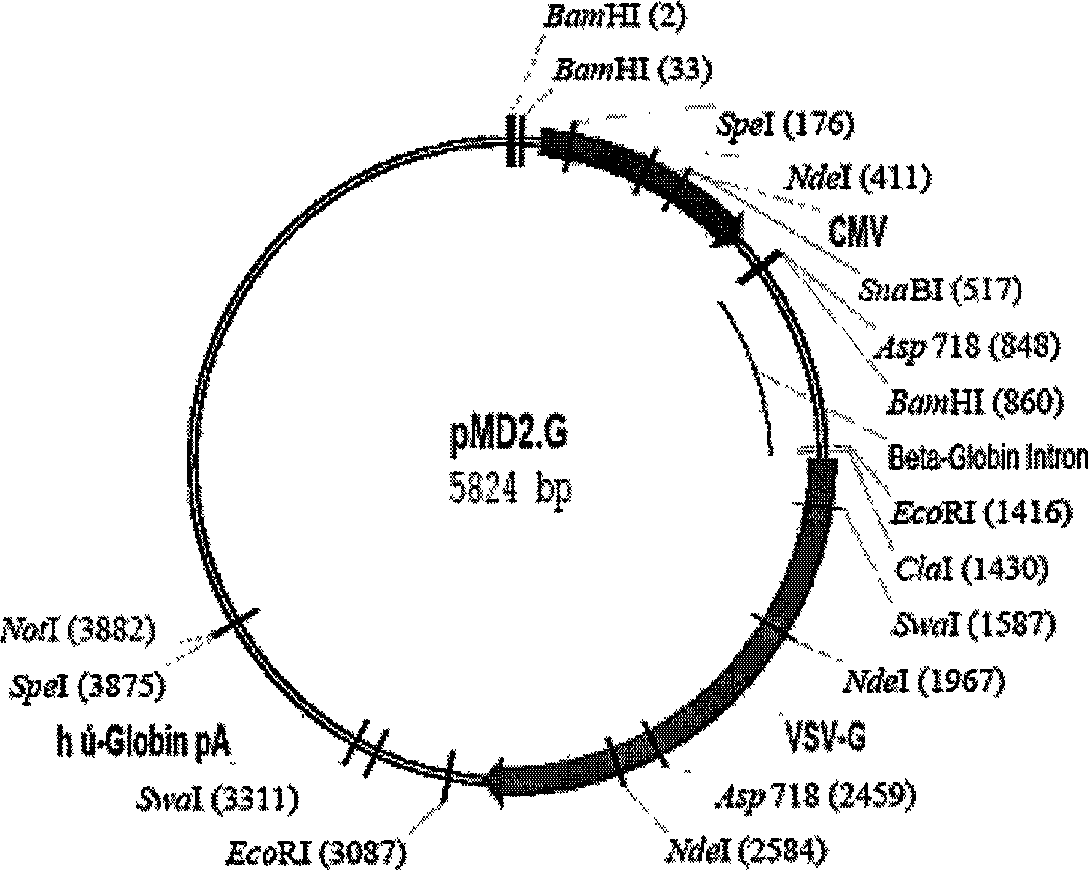Human liver cancer high-transfer cell strain with stable expression of fluorescent protein and construction method thereof
A fluorescent protein, stable expression technology, applied to cells modified by introducing foreign genetic material, using vectors to introduce foreign genetic material, recombinant DNA technology, etc., can solve the inability to completely eliminate the toxic side effects of liver cancer cells and the integration efficiency of fluorescent protein coding genes Low, fluorescent protein coding genes are easy to lose and other problems, to achieve the effect of improving stable expression rate, improving cell transfection efficiency, and shortening cloning time
- Summary
- Abstract
- Description
- Claims
- Application Information
AI Technical Summary
Problems solved by technology
Method used
Image
Examples
Embodiment 1
[0021] 1. Lentivirus packaging plasmid (Lentiviral vector): Lentivirus lentivirus vector system (Tronolab company) was used. The viral packaging system consists of pLVTHM ( figure 1 ), pCMV-dR8.74 ( figure 2 ) and pMD2G ( image 3 ) consists of three plasmids, in which pLVTH contains RFP or GFP gene, driven by EF1 (Elongation Factor) promoter ( figure 1 ). pCMV-dR8.74 contains the gag gene of HIV virus, which encodes the main structural protein of the virus; the pol gene, which encodes virus-specific enzymes; the rev gene, which encodes a regulatory factor that regulates the expression of gag and pol genes ( figure 2 ). pMD2G contains the VSVg gene derived from herpes simplex virus, which provides the capsid protein required for viral packaging ( image 3 ).
[0022] 2, the amplification of plasmid DNA: plasmid pLVTHM, pCMV-dR8.74 and pMD2G transform escherichia coli by routine method, screen positive clone with corresponding antibiotic, carry out plasmid DNA extract...
PUM
 Login to View More
Login to View More Abstract
Description
Claims
Application Information
 Login to View More
Login to View More - R&D
- Intellectual Property
- Life Sciences
- Materials
- Tech Scout
- Unparalleled Data Quality
- Higher Quality Content
- 60% Fewer Hallucinations
Browse by: Latest US Patents, China's latest patents, Technical Efficacy Thesaurus, Application Domain, Technology Topic, Popular Technical Reports.
© 2025 PatSnap. All rights reserved.Legal|Privacy policy|Modern Slavery Act Transparency Statement|Sitemap|About US| Contact US: help@patsnap.com



